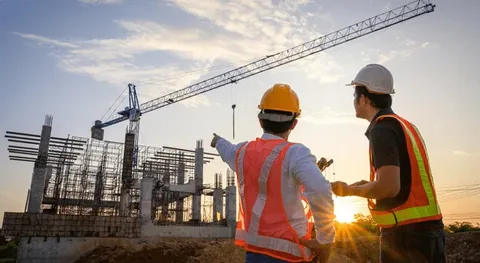What types of scaffolding are commonly used in NYC construction
Common types include frame scaffolding, suspended scaffolding, mast climbing scaffolding, and supported scaffolding. Each suits different use cases like facade restoration or high rise construction, with varying load capacities and height access.
Which NYC regulations apply to scaffolding on construction sites
NYC scaffolding is regulated by the New York City Department of Buildings and must also comply with OSHA standards. Requirements include permits, load ratings, inspections, and fall protection systems to ensure safety and legal compliance.
How do you select a reliable scaffolding provider in New York City
Check for valid NYC licenses, insurance, safety records, project references, and equipment maintenance logs. Trustworthy providers also offer on site evaluations, engineered drawings, and comprehensive support throughout the project.
What are the cost drivers for scaffolding services in NYC?
Costs are influenced by scaffold height, rental duration, material type, site conditions, and necessary permits. Sidewalk shed requirements and labor for installation and dismantling also significantly affect overall pricing.
What safety measures should contractors insist on for scaffolding operations
Scaffolds must include guardrails, toe boards, proper decking, fall protection, daily inspections, and must be erected by certified personnel. Clear signage, weather monitoring, and pedestrian safety provisions are also essential.
How do scaffolding timelines integrate into construction scheduling
Scaffolding erection should align with project phases such as facade access and exterior finishing. Delays in scaffold setup can stall multiple trades, making early coordination and buffer scheduling crucial.
What are common site conditions in NYC that complicate scaffolding work
Challenges include narrow sidewalks, adjacent structures, street use constraints, overhead obstructions, and high winds. Proper planning and scaffold design must account for these to avoid violations and delays.
How can scaffolding support facade restoration and building envelope work
Scaffolding enables safe, stable access for masonry repairs, window installation, and material staging. Mast climbing or suspended systems are ideal for tall facades, especially when frequent movement is required.
What documentation should be collected from a scaffolding contractor
Gather proof of permits, insurance, scaffold design certifications, inspection logs, load charts, and project timelines. Keeping these records protects against legal, financial, and operational risks.
How can contractors optimize scaffolding usage to maximize value
Plan scaffold rental to minimize idle time. Use modular systems to serve multiple phases, negotiate long-term discounts, and coordinate closely with all trades to maximize scaffold utility and return on investment.
Internal Linking Suggestions
- Link to NYC Construction Permit and Safety Requirements
- Link to Mast Climbing vs Suspended Scaffolds: Pros and Cons
- Link to Fall Protection Systems for High-Rise Projects
Schema Recommendations
- Use FAQPage structured data for the Q and A format.
- Apply Article schema to define the topic and enhance visibility in search results.
- Tag key elements like Department of Buildings, OSHA, and sidewalk shed using structured data attributes.
What is scaffolding used for in NYC construction?
Scaffolding provides temporary platforms for workers to safely access high areas on buildings for construction, maintenance, or repair, especially for facades and high-rises in NYC.
Do you need a permit for scaffolding in NYC?
Yes. Scaffolding requires a permit from the NYC Department of Buildings, especially for installations over 40 feet or those obstructing sidewalks or streets.
What are the main types of scaffolding?
The most common types are supported scaffolding, suspended scaffolding, and mast climbing scaffolding, each suited for different heights and site conditions.
How much does scaffolding cost in NYC?
Costs range from $25 to $75 per linear foot, depending on height, duration, material, labor, and location. Sidewalk sheds and permits add extra.
How long does scaffold setup take?
Setup time varies by project size but typically takes 1 to 3 days for small buildings and up to a week for large high-rises.
Who regulates scaffolding safety in NYC?
Safety is enforced by the NYC Department of Buildings and OSHA. All scaffolds must meet strict guidelines for worker and public safety.
Can scaffolding be reused on the same project?
Yes. Modular systems allow scaffolding to be relocated and reused across building sides or project phases, helping reduce rental costs.
What safety features are required on scaffolding?
Scaffolds must have guardrails, toe boards, stable platforms, fall protection, and be inspected daily by a certified competent person.
How do weather conditions affect scaffolding?
Strong winds, snow, or ice can make scaffolding unsafe. Work should pause during severe weather, and structures must be secured properly.
How do I choose a scaffolding company in NYC?
Look for licensed, insured providers with experience, strong safety records, and familiarity with NYC codes and permits. Request references and previous job photos.
Summary
In New York City dense, regulated environment, scaffolding is a mission-critical aspect of construction project planning. Selecting a qualified vendor, adhering to safety and legal requirements, and integrating scaffolding into the build schedule can dramatically improve site efficiency, reduce costs, and enhance safety.



